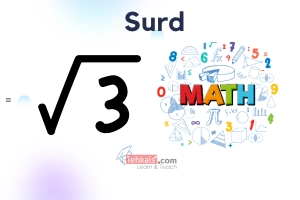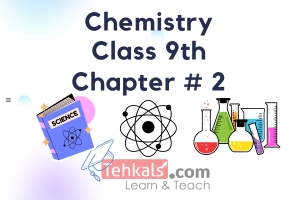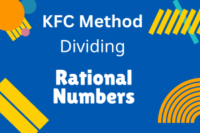Chemistry Class 9 Chapter 1
Published: 3 Sep 2023
Chemistry Class 9 Chapter 1 serves as the stepping stone for students entering the world of chemistry. It introduces fundamental concepts like matter classification, Elements, Compounds, Mixture, and Chemical Formulas. These concepts are essential for understanding the basics of the world of chemistry.
Chemistry Class 9 Chapter 1 Notes
Chemistry 9th Class Chapter 1
Chemistry Class 9 Chapter 1-MCQs
Fundamental of Chemistry
1. The complete study of__________ is called matter.(a) Matter
(b) Energy
(c) Frequency
(d) None of these
Show Answer
Matter
2. We all depend upon different ___________ , Which are necessary for our survival.
(a) Crucibles
(b) Chemicals
(c) Isotopes
(d) None of these
Show Answer
Chemicals
3. Chemistry has a wide range of _______________ which is serving the humanity.
(a) Applications
(b) Properties
(c) Techniques
(d) None of these
Show Answer
Applications
4. Petrochemicals, medicines, drugs, papers, soap, detergents, paints, colour, pigments etc are the inventions of ________________.
(a) Biology
(b) Physics
(c) Chemistry
(d) None of these
Show Answer
Chemistry
5. The study of chemistry also provides knowledge and techniques to improve our __________________.
(a) Stamina
(b) Appearance
(c) Health
(d) None of these
Show Answer
Health
6. The Study of chemistry also helps us to explore and conserve the _____________resources.
(a) Artificial
(b) Natural
(c) Coilateral
(d) None of these
Show Answer
Natural
Muslim Scientists
7. The Muslim period in science of chemistry was about _____________ years.(a) 1000
(b) 800
(c) 1200
(d) None of these
Show Answer
1000
8. The Egyptians, the Greeks and the ____________ contributed much to the science of chemistry.
(a) Muslims
(b) Babylonians
(c) Jews
(d) None of these
Show Answer
Muslims
9. In this period, Muslim scientist focused on finding ways to change base metal such as Lead into______________.
(a) Mercury
(b) Gold
(c) Bronze
(d) None of these
Show Answer
Gold
10. Muslim scientist discovered ___________ elements like arsenic, antimony and bismuth etc.
(a) Few
(b) many
(c) five
(d) None of these
Show Answer
many
11. Many new chemicals processes were also introduced by Muslim scientists such as filtration, fermentation and ________etc.
(a) Ultra sonication
(b) Sedimentation
(c) Distillation
(d) None of these
Show Answer
Distillation
12. The Period of Muslims is generally called the period of ___________ in the history of chemistry.
(a) Al-Chemists
(b) Elites
(c) Masters
(d) None of these
Show Answer
Al-Chemists
13. _________ is generally known as the “Father of chemistry”.
(a) Jabber Bin Haiyan
(b) Ibn-e-Sina
(c) Al-Beruni
(d) None of these
Show Answer
Jabber Bin Haiyan
14. Who was the first scientist who has well- established laboratory?
(a) Zakriya Al Razi
(b) Jabber Ibn Haiyan
(c) Al Beruni
(d) None of these
Show Answer
Jabber IbnHaiyan
15. Jabber bin Haiyan was the first to prepare.
(a) $ HCl $
(b) $ HNO_3 $
(c) $ H_2SO_4 $
(d) All of them
Show Answer
All of them
16. Jabber Bin Haiyan was also known as ______ in the Europe.
(a) Geber
(b) Ibn-e-Sina
(c) Al-Razi
(d) None of these
Show Answer
Geber
17. Jabber Bin Haiyan’s Demise occur in ____________.
(a) 721 A.D
(b) 803 A.D
(c) 803 B.C
(d) None of these
Show Answer
803 A.D
18. Al-Razi wrote ________ books.
(a) 26
(b) 16
(c) 25
(d) 20
Show Answer
26
19. The most famous book of Al-Razi was _______________.
(a) Khayaban
(b) Mindeel
(c) Al-Asrar
(d) None of these
Show Answer
Al-Asrar
20. Al-Razi was the first scientist / Chemist to divide the chemical ________into four types .
(a) Isotopes
(b) Compound
(c) Solution
(d) None of these
Show Answer
Compound
21. Al-Razi prepared alcohol by ________.
(a) Fermentation
(b) Coagulation
(c) Filtration
(d) None of these
Show Answer
Fermentation
22. Al-Beruni was born in 973 AD and died in ______________.
(a) 1024 AD
(b) 1048 A.D
(c) 1072 AD
(d) None of these
Show Answer
1048 A.D
23. Al-Beruni was the first chemist who determined the ________ of different substances.
(a) Frequencies
(b) Chemical Formula
(c) Densities
(d) None of these
Show Answer
Densities
24. Ibn-e-Sina was born in ___________ and died in 1037 A.D.
(a) 980 AD
(b) 980 B.C
(c) 985 A.D
(d) None of these
Show Answer
980 AD
25. Ibn-e-Sina is generally known as the __________ of the Muslim’s world.
(a) Maximus
(b) Alexander
(c) Aristotle
(d) None of these
Show Answer
Aristotle
26. Ibn-e-Sina was the first one who rejected the idea that base metals can be converted into _____.
(a) Silver
(b) Gold
(c) Neon
(d) None of these
Show Answer
Gold
27. Ibn-e-Sina has written more than ________ books that are now taught in the Europe.
(a) 100
(b) 101
(c) 95
(d) None of these
Show Answer
100
To Download Complete Notes of Class 9 Chemistry Notes, Click the link.
Definition of Chemistry
Branches of Chemistry
28. Chemistry is the branch of ____________ science which includes the study of material and substances.(a) Chemical
(b) Physical
(c) Historical
(d) None of these
Show Answer
Physical
29. ___________ Chemistry deal with the relationship between physical properties of substances along with chemical changes in them.
(a) Organic
(b) Inorganic
(c) Physical
(d) None of these
Show Answer
Physical
30. Hydrocarbon contains ________ elements only.
(a) C and H
(b) C,H,O
(c) C and O
(d) None of these
Show Answer
C and H
31. The study of ________ and their derivatives are called organic chemistry.
(a) Hydrocarbons
(b) Isotopes
(c) Chemical species
(d) None of these
Show Answer
Hydrocarbons
32. Inorganic chemistry deals with all kind of elements and compounds, EXCEPT _________ and their derivatives.
(a) Organic compounds
(b) Chemical Compounds
(c) Biochemical
(d)
Show Answer
Organic compounds
33. Analytical chemistry deals with qualitative and quantitative analysis of __________.
(a) Energy
(b) Quarks
(c) matter
(d) None of these
Show Answer
matter
34. ___________ Chemistry deals with the study of techniques and chemical processes for the preparation of different industrial products.
(a) Environmental
(b) Industrial
(c) Nuclear
(d) None of these
Show Answer
Industrial
35. Nuclear Chemistry concerned with the study of ____________, changes occurring in it and its properties.
(a) Nucleus
(b) Sub atomic particles
(c) Composition
(d) None of these
Show Answer
Nucleus
36. Biochemistry deals with the study of synthesis, composition, decomposition and chemical reaction of ______ factors.
(a) Abiotic
(b) Biotic
(c) Both a and b
(d) None of these
Show Answer
Biotic
Elements
Symbols of Elements
37. Anything that occupies space and having a mass is called ________________.(a) Matter
(b) Mixture
(c) Substance
(d) None of these
Show Answer
Matter
38. Everything in the ________ is made of matter.
(a) Earth
(b) Mars
(c) Universe
(d) None of these
Show Answer
Universe
39. A piece of matter in _________ form is substance.
(a) Impure
(b) Pure
(c) Both a and b.
(d) None of these
Show Answer
Pure
40 Pure water is an example of a ____________.
(a) Substance
(b) Element
(c) Compound
(d) None of these
Show Answer
Substance
41. Element is a pure substance which cannot be _______ into other simpler substances by any physical or chemical process.
(a) Split up
(b) Combined up
(c) None
(d) All of These
Show Answer
Split up
42. The fundamental unit of an element is ______________.
(a) atom
(b) Electron
(c) Proton
(d) None of these
Show Answer
atom
43. Scientists have discovered about _____ elements.
(a) 108
(b) 118
(c) 128
(d) None of these
Show Answer
118
44. There are __________ naturally occurring elements
(a) 92
(b) 94
(c) 96
(d) None of these
Show Answer
92
45. There are __________ artificial elements.
(a) 28
(b) 27
(c) 26
(d) None of these
Show Answer
26
46. Each element consists of ________kind of atoms.
(a) different
(b) Same
(c) None
(d) All of these
Show Answer
Same
47. In 1814, ____________ suggested the system for representing element with symbol.
(a) Berzelius
(b) Max Plank
(c) Maximus
(d) None of these
Show Answer
Berzelius
48. The shortest name of an element is called __________.
(a) Representation
(b) Isotopes
(c) symbol
(d) None of these
Show Answer
symbol
49. B, C, F are the symbols of __________________.
(a) Compounds
(b) Elements
(c) Molecules
(d) None of these
Show Answer
Elements
Compounds
50. Compound is a pure substance consists of two or more _________ types of elements chemically combined together in a fixed ratio by mass.(a) Different
(b) Same
(c) Both a and b
(d) None of these
Show Answer
Different
51. In the formation of a compound, the element must undergo __________changes.
(a) Physical
(b) Analytical
(c) Chemical
(d) None of these
Show Answer
Chemical
52. In water $ (H_2O) $ molecule, the ratio of Hydrogen and oxygen is ____________.
(a) 1:2
(b) 2:1
(c) 2:2
(d) 1:1
Show Answer
2:1
53. A compound is always represented by ___________.
(a) Chemical formula
(b) Physical Formula
(c) None
(d) All of These
Show Answer
Chemical formula
Mixture
Types of Mixture
54. A _________ is made up of two or more substances that are not chemically combined.(a) Compound
(b) Mixture
(c) Element
(d) None of these
Show Answer
Mixture
55. The components of a mixture are not in a fixed __________.
(a) Ratio
(b) Composition
(c) Pattern
(d) None of these
Show Answer
Ratio
56. Mixture can be separated by _______methods.
(a) Physical
(b) Analytical
(c) Chemical
(d) None of these
Show Answer
Physical
57. A homogenous mixture is one which has uniform __________ throughout its mass.
(a) Properties
(b) structure
(c) Composition
(d) None of these
Show Answer
Composition
58. Example of homogenous mixture is the solution of salt (NaCl) and ______________.
(a) Benzene
(b) Water
(c) chloroform
(d) None of these
Show Answer
Water
59. A hetrogenous mixture is one which does not have _________composition throughout its mass.
(a) Uniform
(b) Semi Uniform
(c) Unformal
(d) None of these
Show Answer
Uniform
60 Salad, dirt, sand and water etc are the example of ___________________.
(a) Homogenous mixture
(b) Compound
(c) Heterogeneous mixture
(d) None of these
Show Answer
Heterogeneous mixture
61 The _______ of a compound is sharp and fixed.
(a) Freezing point
(b) Melting point
(c) Boiling point
(d) None of these
Show Answer
Melting point
62. ____________ do not have sharp and fixed melting point.
(a) Mixture
(b) Molecules
(c) Isotopes
(d) None of these
Show Answer
Mixture
63. When iron (Fe) and Sulphur (s) is strongly heated, it react with each other to form a compound.
(a) $ FeS $
(b) $ Fe_2S $
(c) $ FeS_2 $
(d) $ Fe_2S_2 $
Show Answer
FeS
Atomic Number and Mass Number
64. The number of ______________ present in the nucleus of an atom of an element is called atomic number .(a) Neutrons
(b) Electrons
(c) Protons
(d) None of these
Show Answer
Protons
65. An atom is electrically _______, because they have same number of electrons and protons.
(a) Cationic
(b) Neutral
(c) Anionic
(d) None of these
Show Answer
Neutral
66. Elements are arranged in periodic table on the basis of number of ___________.
(a) Protons
(b) Quarks
(c) Electrons
(d) None of these
Show Answer
Protons
67. Atomic number is represented by _____________.
(a) z
(b) Z
(c) a
(d) A
Show Answer
Z
68. The atomic number of carbon ( C ) is ______________.
(a) 5
(b) 7
(c) 6
(d) 8
Show Answer
6
69. Mass number is also called ____________number.
(a) Nucleon
(b) Neutron
(c) None
(d) All of these
Show Answer
Nucleon
70. The sum of number of protons and neutrons present in __________ of an atom is called mass number.
(a) Orbits
(b) Atom
(c) Nucleus
(d) None of these
Show Answer
Nucleus
71. Mass number is represented by _________________.
(a) a
(b) z
(c) A
(d) Z
Show Answer
A
72. The mass number of carbon (C) atom is _______________.
(a) 12
(b) 2
(c) 22
(d) 18
Show Answer
12
73. Electrons, protons and neutrons are collectively called as _________.
(a) Charges
(b) Unit
(c) Subatomic particle
(d) None of these
Show Answer
Subatomic particle
Relative Atomic MassAtomic Mass Unit
74. Relative atomic mass is the mass of an atom of an element relative to the mass of $ 1/12 $ of the mass of _________.(a) $ C-12 $
(b) $ C-13 $
(c) $ C-14 $
(d) None of these
Show Answer
$ C-12 $
75. The atomic weight of $ C-12 $ is 12g which equal to ___________.
(a) 12 mol
(b) 1 mol
(c) 6.022 mol
(d) None of these
Show Answer
1 mol
76. 1 mol of $ C-12 $ contain ______atoms.
(a) $ 6.023 \times 10^{23} $
(b) $ 1.09 \times 10^{-11} $
(c) $ 6.023 \times 10^{-23} $
(d) None of these
Show Answer
$ 6.023 \times 10^{23} $
77. Average atomic mass is the weighted average of the atomic masses of the naturally occurring ____________ of an element.
(a) Charges
(b) Isotopes
(c) Atomic Number
(d) None of these
Show Answer
Isotopes
Chemical Formula
78. An abbreviation used for the full name of a compound with the help of __________ is called chemical formula.(a) Pattern
(b) Brails
(c) Symbols
(d) None of these
Show Answer
Symbols
79. The formula tells us the type of atoms and ______ of the different atoms present in the compound.
(a) Ratio
(b) Atomic number
(c) Density
(d) None of these
Show Answer
Ratio
80. The simplest formula which shows the _________ whole number ratio of the atoms of different elements present in a compound is called empirical formula.
(a) Largest
(b) Smallest
(c) Average
(d) None of these
Show Answer
Smallest
81. The empirical formula for benzene $ (C_6H_6) $ is:
(a) $ CH_2 $
(b) $ C_2H $
(c) $ C_2H_2 $
(d) $ CH $
Show Answer
$ CH $
82. The molecular formula shows the _________numbers of atoms of different elements present in one molecule of a compound.
(a) Approximate
(b) Whole
(c) actual
(d) None of these
Show Answer
actual
83. The smallest repeating unit of an ____________ compound showing the simple reaction between the ions is called formula unit.
(a) Ionic
(b) Covalent
(c) Metallic
(d) None of these
Show Answer
Ionic
Molecular Mass
84. The __________ of the relative atomic masses of all the atoms present in the molecule is called molecular Mass.(a) Subtraction
(b) Product
(c) Sum
(d) None of these
Show Answer
Sum
85. The sum of the atomic masses of __________ present in the formula unit of an ionic compound is called formula mas.
(a) Ions
(b) Isotopes
(c) atoms
(d) None of these
Show Answer
Ions
Chemical SpeciesIonMolecular IonFree RadicalMolecule
86. The atoms, molecules, ions etc that __________ in a chemical reaction is called chemical specie.(a) Violate
(b) Hinder
(c) Take part
(d) None of these
Show Answer
Take part
87. The particle that carries an electrical charge, positive or negative due to the loss or gain of one or more _____ is called an ion.
(a) Protons
(b) Electrons
(c) Neutrons
(d) None of these
Show Answer
Electrons
88. The positively charged specie is called ____________.
(a) Cation
(b) Free radical
(c) atom
(d) None of these
Show Answer
Cation
89. The negatively charged specie is called ___________________.
(a) Free radical
(b) Cation
(c) Anion
(d) None of these
Show Answer
Anion
90. The atom or group of atoms that has an __________ electron in an outer shell with no charge is called free radical.
(a) Unpaired
(b) Odd
(c) Both a and b
(d) None of these
Show Answer
Both a and b
91. A molecule is formed by ________ combination of atom.
(a) Chemical
(b) Physical
(c) Electrical
(d) None of these
Show Answer
Chemical
92. Di-atomic molecules consist of _________ atoms i.e $ H_2 $.
(a) 4
(b) 3
(c) 5
(d) 2
Show Answer
2
93. The ___________ are very big and large.
(a) Monoatomic
(b) Macro molecules
(c) Micro molecules
(d) None of these
Show Answer
Macro molecules
94. _____________ is a macromolecule found in blood.
(a) Haemoglobin
(b) $ H_2O $
(c) HCl
(d) None of these
Show Answer
Hemoglobin
Avogadro’s NumberMole
95. Avogadro’s number is the collection of __________ particles.(a) $ 1.0 \times 10^{-11} $
(b) $ 6.023 \times 10^{23} $
(c) $ 3 \times 10^8 $
(d) None of these
Show Answer
$ 6.023 \times 10^{23} $
96. The amount of a substance which contains ____________ number is called mole.
(a) Avogadro’s
(b) Mass number
(c) Formula
(d) None of these
Show Answer
Avogadro’s
97. Mole is represented by _________________.
(a) NA
(b) mol
(c) amu
(d) None of these
Show Answer
mol
98. Which one of the following can be broken into simpler substances.
(a) Ammonia
(b) Oxygen
(c) Sulphur
(d) None of these
Show Answer
Ammonia
99. The gram molecular mass of $ HNO_3 $ is .
(a) 60
(b) 100
(c) 63
(d) None of these
Show Answer
63
100. Which one is the example of triatomic molecule?
(a) $ O_2 $
(b) $ CO_2 $
(c) $ CH_4 $
(d) None of these
Show Answer
$ CO_2 $
101. Which of the following is a homogenous mixture?
(a) Smoke
(b) air
(c) Fog
(d) Smog
Show Answer
air






Thanks to provide us a useful notes of chemistry. I have no notes in real but I have in my mobile.